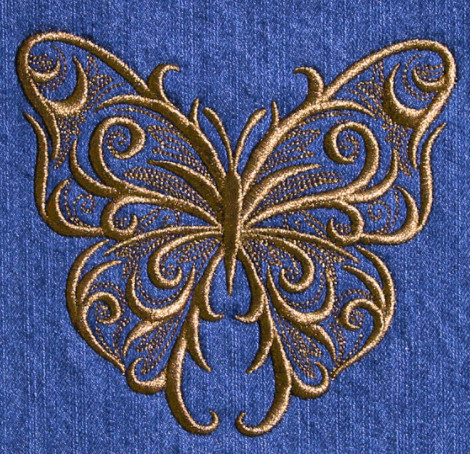Thread and Pixels: The Artistry of Embroidery Digitizing
Embroidery, a time-honored craft that dates back centuries, has undergone a remarkable transformation in recent years, thanks to the advent of technology. Today, the delicate art of embroidery is seamlessly blended with the precision of digital design in a process known as embroidery digitizing. This fusion of thread and pixels has opened up a world of creative possibilities, allowing designers and artisans to translate their visions into stunning embroidered masterpieces. In this comprehensive guide, we'll delve deep into the artistry of embroidery digitizing, exploring its techniques, tools, and the intricate dance between thread and pixels.
The Essence of Embroidery Digitizing
Embroidery digitizing is the process of converting a digital image or artwork into a format that an embroidery machine can understand and replicate. It's the bridge between the creativity of a designer and the precision of an embroidery machine's needle. Here's why embroidery digitizing is a game-changer in the world of textiles and fashion:
● Precision: Digitizing allows for incredibly precise embroidery, ensuring that every stitch is in the right place.
● Complexity: It enables the creation of intricate designs with multiple colors and details that would be challenging or impossible to achieve manually.
● Reproducibility: Once a design is digitized, it can be reproduced on various garments or fabrics with consistent quality.
● Efficiency: Digitized designs can be stored and reused, saving time and effort for future projects.
● Customization: Designers can work with clients to bring their unique visions to life through embroidery.
The Art of Digitizing: Techniques and Tools
Embroidery digitizing is a skill that combines technical know-how with artistic flair. Here are some key techniques and tools that digitizers use to create stunning embroidered designs:
Digitizing Software
● Key Features: Vector-based drawing tools, stitch generation, color mapping, simulation previews.
● Why It Matters: Specialized digitizing software is the heart of the process. It allows digitizers to create and edit designs, assign stitch types, and specify thread colors.
Image Conversion
● Key Features: Image tracing, color separation, resizing.
● Why It Matters: Many digitizing projects start with an existing image or artwork. Converting this image into a format that can be embroidered is a crucial step.
Stitch Types
● Key Features: Satin stitches, fill stitches, running stitches, complex fills.
● Why It Matters: Choosing the right stitch type affects the texture, appearance, and durability of the embroidery. Different parts of a design may require different stitch types.
Underlay Stitches
● Key Features: Dense underlay, open underlay, contour underlay.
● Why It Matters: Underlay stitches provide stability and prevent fabric from showing through the embroidery. They are the foundation of a well-executed design.
Color Mapping
● Key Features: Assigning thread colors and managing thread changes.
● Why It Matters: Accurate color mapping ensures that the final embroidery matches the original design. Managing thread changes efficiently saves time and reduces errors.
Density Adjustment
● Key Features: Stitch spacing, density mapping.
● Why It Matters: Adjusting stitch density is crucial to achieving the desired texture and appearance of the embroidery. It also affects how the design interacts with different fabric types.
Pathing and Sequencing
● Key Features: Stitch order, jump stitches, tie-in and tie-out stitches.
● Why It Matters: Proper pathing and sequencing ensure that the embroidery machine follows a logical order, reducing thread breaks and optimizing efficiency.
Testing and Refinement
● Key Features: Stitching out test samples and making adjustments.
● Why It Matters: Testing the digitized design on the actual fabric helps identify issues and allows for refinements to achieve the desired results.
Machine Compatibility
● Key Features: File format compatibility and machine-specific settings.
● Why It Matters: Different embroidery machines may require specific file formats or settings. Digitizers need to ensure compatibility with the target machine.
The Creative Process: From Pixels to Stitches
Let's take a closer look at the creative journey of turning pixels into stitches:
Design Inspiration
● Starting Point: An idea, sketch, or existing artwork.
● Digital Conversion: If the design is not already digital, it's scanned or recreated in digital format using graphic design software like Adobe Illustrator or CorelDRAW.
Digitizing Software
● Importing the Design: The digital design is imported into specialized embroidery digitizing software.
● Stitch Assignment: The digitizer assigns stitch types (satin, fill, etc.) to different parts of the design.
● Color Mapping: Thread colors are chosen and mapped to the design elements.
Stitch Generation
● Automatic Stitching: Some software can automatically generate stitches based on the assigned stitch types and color mapping.
● Manual Refinement: The digitizer fine-tunes the stitch settings, adjusting density, spacing, and pathing as needed.
Testing and Refinement
● Stitch-Out Test: A test sample of the design is stitched out on the target fabric.
● Review and Adjustments: The digitizer examines the test sample, making adjustments to stitch settings and sequences as necessary.
Final Design
● Approval: Once the test sample meets the desired quality, the final digitized design is ready for production.
● File Export: The design is saved in the appropriate file format for the embroidery machine.
Machine Embroidery
● Loading the Design: The digitized design is loaded into the embroidery machine.
● Stitching: The machine follows the path and instructions set by the digitizer, creating the embroidered design on the fabric.
Quality Control
● Inspection: The finished embroidery is inspected for any flaws or inconsistencies.
● Trimming and Finishing: Excess thread is trimmed, and any necessary finishing touches are applied.
The Artistry of Thread Selection
In embroidery digitizing, the choice of thread is as much a part of the artistic process as the design itself. Thread selection can dramatically impact the final appearance and texture of the embroidery. Here are some key factors to consider:
Thread Type
● Rayon: Known for its smooth, shiny finish and vibrant colors.
● Polyester: Durable and colorfast, suitable for a wide range of applications.
● Cotton: Offers a matte finish and a natural look, often used for vintage or rustic designs.
● Metallic: Adds a touch of luxury and shine, ideal for special occasions.
Thread Weight
● Thickness: Threads come in various thicknesses, known as weight. Heavier weights create bolder, more textured embroidery, while lighter weights produce finer, delicate details.
Color Matching
● Exact Matching: Ensuring that the chosen thread colors match the design's colors accurately.
● Variegated Threads: These threads change color gradually along their length, adding dimension to the embroidery.
Specialty Threads
● Glow-in-the-Dark: Perfect for adding an element of surprise to designs.
● Multicolor Threads: Threads that shift colors as they catch the light, creating dynamic effects.
Texture and Finish
● Matte: Provides a subtle, non-reflective finish.
● High Sheen: Offers a glossy, reflective surface.
Thread Brand
● Quality: Established thread brands are known for their consistency and colorfastness.
● Compatibility: Some machines may work better with specific thread brands.
The Future of Embroidery Digitizing
As technology continues to advance, the world of embroidery digitizing evolves as well. Here are some trends and innovations that are shaping the future of this art form:
Artificial Intelligence (AI)
● AI-powered software can analyze and digitize designs with minimal human intervention, speeding up the process.
Augmented Reality (AR)
● AR applications can project a digital preview of the embroidered design onto the fabric, allowing digitizers to visualize the final result in real-time.
Sustainable Materials
● Environmentally friendly threads and fabrics are becoming more popular, aligning with the growing emphasis on sustainability.
3D Embroidery
● Techniques like puff embroidery create three-dimensional effects by adding volume to certain parts of the design.
Customization on Demand
● With the rise of e-commerce, personalized and on-demand embroidery is gaining momentum, allowing consumers to order custom-embroidered products online.
Conclusion
Embroidery digitizing is a fascinating blend of tradition and technology, where the artistry of design meets the precision of digital stitching. It has revolutionized the world of textiles, allowing for intricate and complex embroidery that was once unimaginable. As the field continues to evolve, embracing new technologies and techniques, the possibilities for creative expression through embroidery are boundless. Whether you're a seasoned digitizer or just beginning to explore this art form, the fusion of thread and pixels promises an exciting journey into the world of embroidery digitizing. So, thread your needle and unleash your imagination—there's a world of embroidered art waiting to be created.



